Aspects of translating gender
DOI:
https://doi.org/10.13092/lo.11.914Abstract
Grammatical gender and the related concept, 'social gender', are important linguistic categories which, in this article, are used to illustrate that the translation process is not only a 'cross-cultural transfer' but also a cross-ideological transfer. By departing from the view that different languages reflect different ways of perceiving reality, it is argued here that the linguistic structure of languages with regard to gender (i.e. grammatical vs. pronominal gender), as well as different connotations of gender, have a considerable influence upon the translation process and, hence, on how the reader of the target language is meant to perceive reality. The article emphasizes the importance of the translator's role in analyzing gender aspects in the source text and determining the ideological impact gender connotations may have in both the source and the target text.Downloads
Download data is not yet available.
Downloads
Published
2002-06-30
Issue
Section
Sprachen im Vergleich / Languages in comparision:
License
Copyright (c) 2002 Uwe Kjær Nissen

This work is licensed under a Creative Commons Attribution 4.0 International License.
How to Cite
Nissen, U. K. (2002). Aspects of translating gender. Linguistik Online, 11(2). https://doi.org/10.13092/lo.11.914


